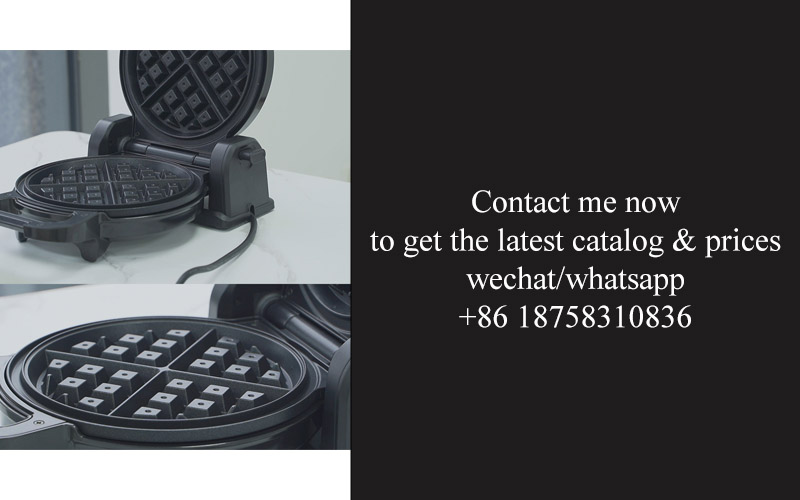Address
304 North Cardinal
St. Dorchester Center, MA 02124
Work Hours
Monday to Friday: 7AM - 7PM
Weekend: 10AM - 5PM
Address
304 North Cardinal
St. Dorchester Center, MA 02124
Work Hours
Monday to Friday: 7AM - 7PM
Weekend: 10AM - 5PM

As we delve into the world of modern culinary arts, one can’t help but notice the evolution of cookware that has transformed the way we approach cooking at home. The journey from traditional cookware to innovative, high-tech solutions has been a fascinating one, and one particular standout in this transformation is the ceramic coated non-stick plate. This article takes a closer look at the rise of ceramic coated non-stick plates, exploring their benefits, market trends, and how they are reshaping the kitchen landscape.
The evolution of non-stick cookware has been a fascinating journey, marked by continuous innovation and a quest for convenience in the kitchen. It all began with the humble frying pan, and over the years, it has transformed into a staple in every modern kitchen. Let’s take a closer look at how non-stick cookware has evolved.
Early non-stick cookware was introduced in the 1950s, with the advent of Teflon, a brand that became synonymous with non-stick technology. The development of Teflon was a significant milestone, as it offered a solution that promised easy cooking, effortless cleaning, and minimal sticking. This coating was made from polytetrafluoroethylene (PTFE), a synthetic fluoropolymer that could withstand high temperatures without releasing harmful fumes.
However, the rise of Teflon brought with it concerns about the potential health risks associated with its manufacturing process and the possibility of PTFE breaking down at high temperatures, releasing harmful particles. These concerns led to the search for alternative non-stick coatings that were both safe and effective.
Enter ceramic non-stick coatings, which gained popularity in the late 1990s. Unlike Teflon, ceramic coatings are made from inorganic materials, such as silicon dioxide (SiO2), which is a common compound found in sand and glass. This natural ingredient is free from PTFE and PFOA (perfluorooctanoic acid), making it a healthier choice for consumers. Ceramic coatings also offer excellent non-stick properties, withstanding temperatures up to 850°F (454°C) without degrading.
One of the key advantages of ceramic non-stick cookware is its durability. While Teflon coatings can wear down over time, leading to a loss of non-stick properties, ceramic coatings tend to be more resilient. They can withstand more scratching and are less likely to chip or peel, ensuring that the cookware remains effective for a longer period.
Another significant development in non-stick cookware is the introduction of hard-anodized aluminum cookware. This type of cookware combines the non-stick benefits of ceramic coatings with the strength and durability of aluminum. The anodizing process creates a hard, non-reactive surface that is resistant to scratching and corrosion, making it a favorite among professional chefs and home cooks alike.
The design of non-stick cookware has also evolved to enhance its functionality. Cookware with induction-compatible bases has become more common, allowing for efficient cooking on induction cooktops. Handles have been designed to be ergonomically comfortable and oven-safe, making it easier to maneuver pots and pans without risk of burns.
Moreover, the aesthetic appeal of non-stick cookware has improved over the years. Manufacturers now offer a wide range of colors and designs, allowing consumers to choose cookware that complements their kitchen decor.
As the market for non-stick cookware has grown, so too has the competition. New brands and products continue to emerge, each promising better performance and more sustainable materials. For instance, some manufacturers are now using plant-based coatings derived from renewable resources, further addressing environmental concerns.
In conclusion, the evolution of non-stick cookware has been driven by a combination of consumer demand for convenience, health, and environmental responsibility. From the early days of Teflon to the current trend of ceramic coatings and sustainable materials, non-stick cookware has come a long way. It’s an ongoing journey of innovation that promises to bring even more advancements to our kitchens in the future.

Ceramic coated non-stick plates have emerged as a game-changer in the kitchenware industry, offering a healthier, more durable, and eco-friendly alternative to traditional non-stick surfaces. These innovative plates are a blend of modern technology and timeless cooking convenience, promising a sleek and hassle-free cooking experience.
The ceramic coating itself is a marvel of material science. It’s a layer of fine ceramic particles that are bonded to the surface of the cookware, creating a smooth, non-reactive, and easy-to-clean surface. Unlike the older non-stick coatings like Teflon, which can release harmful fumes at high temperatures, ceramic coatings are non-toxic and safe for cooking with acidic ingredients.
One of the standout features of ceramic coated non-stick plates is their incredible durability. The ceramic layer is much harder than the coatings found on traditional non-stick pans, which means it can withstand more abuse and still maintain its non-stick properties. Scratches and wear are a rarity with ceramic coatings, which is a huge relief for those who are prone to damaging cookware.
When it comes to ease of cleaning, ceramic coated plates are a dream. The surface is so smooth that food particles don’t stick, making it simple to wipe off or rinse clean. This not only saves time but also reduces the need for harsh chemicals, which is better for your health and the environment.
The eco-friendly aspect of ceramic coated non-stick plates is also a significant draw. The manufacturing process is designed to be more sustainable, with a lower carbon footprint compared to traditional non-stick coatings. Additionally, ceramic is a naturally occurring material, making these plates a greener choice for environmentally conscious consumers.
One of the most appealing attributes of ceramic coated plates is their versatility. They can be used on various types of cooktops, including induction, which is a feature not all non-stick cookware can claim. This means that whether you’re using an electric stove, a gas range, or an induction cooktop, you can rely on your ceramic coated plate to perform consistently.
The aesthetic appeal of ceramic coated plates cannot be overlooked. They come in a variety of sleek designs and colors, adding a touch of elegance to any kitchen. The glossy finish and the variety of finishes available, from matte to glossy, offer a range of options to match personal style preferences.
For those who are health-conscious, ceramic coated non-stick plates are a great choice. The non-reactive nature of the ceramic coating means that the food doesn’t absorb any of the material, so you don’t have to worry about any harmful substances leaching into your meals. This is particularly important when cooking with acidic ingredients like tomatoes or lemon juice.
In terms of performance, ceramic coated plates often outperform their traditional counterparts. The heat is distributed more evenly across the surface, reducing the risk of hot spots and ensuring that your food cooks evenly. This not only saves energy but also improves the taste and texture of your dishes.
The versatility of ceramic coated non-stick plates extends to their use in various cooking techniques. Whether you’re searing a steak, sautéing vegetables, or making a delicate omelette, these plates can handle it all. The non-stick surface means that you can cook with less oil, making your meals healthier.
Lastly, the longevity of ceramic coated plates is a significant factor. While traditional non-stick coatings can wear down over time, leading to a loss of non-stick properties, ceramic coatings are designed to last. With proper care, a ceramic coated plate can be a kitchen staple for years to come.
In conclusion, ceramic coated non-stick plates are a testament to the ongoing evolution of kitchenware. They offer a healthier, more durable, and environmentally friendly alternative to traditional non-stick cookware. With their ease of use, aesthetic appeal, and performance, it’s no wonder that these plates are becoming a favorite among cooks around the world.

Nestled in the heart of the industrial landscape, the factory stands as a testament to modern innovation and dedication to excellence. Its walls are lined with rows of gleaming machinery, each piece meticulously designed to contribute to the creation of high-quality ceramic coated non-stick plates.
The facility is a marvel of efficiency, with a clear flow of operations that starts with raw materials arriving through the main entrance. These materials, including ceramics, metals, and non-toxic coatings, are carefully inspected to ensure they meet the stringent quality standards set by the factory.
Within the heart of the factory, the ceramics department is a hub of precision and craftsmanship. Skilled artisans handcraft the ceramic coatings, layering them onto the metal substrates with a delicate balance of heat and pressure. The process is both an art and a science, requiring a deep understanding of material properties and thermal dynamics.
The coating process itself is a marvel of technology. Specialized ovens are used to cure the ceramic layers, ensuring that each plate boasts a non-stick surface that is durable and safe for everyday use. The factory invests heavily in research and development to perfect the ceramic formula, constantly seeking to improve the longevity and performance of the coatings.
As the ceramic-coated plates move through the production line, they are subjected to rigorous quality control checks. Automated systems scan each plate for any imperfections, ensuring that only the highest quality products proceed to the next stage. This attention to detail is what sets this factory apart from its competitors.
Once the plates have passed quality control, they are packaged in eco-friendly materials, reflecting the factory’s commitment to sustainability. The packaging process is automated, reducing waste and ensuring that each box is sealed with precision to protect the non-stick surface during transit.
The factory is not just a place of production; it’s a community of professionals. Employees receive extensive training to understand the intricacies of the manufacturing process and the importance of safety. The environment is one of collaboration, with teams working together to solve challenges and improve efficiency.
The factory’s commitment to innovation is evident in its continuous investment in new technologies. State-of-the-art equipment is regularly installed to streamline operations and reduce the environmental impact. This focus on the future ensures that the factory remains at the forefront of the ceramic coated non-stick plate industry.
Moreover, the factory actively engages with customers and stakeholders, seeking feedback to refine its products and services. This customer-centric approach has helped build a loyal customer base, with many returning for the reliability and quality of the factory’s output.
As the sun sets over the factory grounds, the production line continues to hum with activity. The factory’s dedication to excellence and its relentless pursuit of perfection are what drive it forward. It’s a place where the art of ceramic coating meets the science of manufacturing, delivering products that not only enhance the cooking experience but also contribute to a healthier lifestyle.
In the world of ceramic coated non-stick plates, this factory is not just a manufacturer—it’s a trendsetter, a beacon of quality, and a cornerstone of the industry’s evolution.

Ceramic coated non-stick plates have gained significant popularity in recent years, and for good reason. Here’s why they have become a top choice for many home cooks and chefs alike:
Their Health BenefitsCeramic coatings are free from harmful chemicals like PFOA and PTFE, which are often found in traditional non-stick coatings. This means that when you cook with ceramic coated plates, you’re not exposing yourself or your family to potentially harmful substances. The health-conscious consumer can enjoy cooking without worrying about the leaching of toxic materials into their food.
Ease of CookingOne of the main attractions of ceramic coated non-stick plates is the ease of cooking they offer. These plates allow for a butter or oil-free cooking experience, which is not only healthier but also makes cleanup a breeze. The smooth, non-reactive surface ensures that food releases effortlessly, reducing the need for scraping and scrubbing.
Stain and Scratch ResistanceCeramic coatings are highly durable and resistant to stains and scratches. Unlike traditional non-stick pans that can easily get scratched and lose their non-stick properties, ceramic coated plates maintain their performance over time. This means that even after years of use, they will continue to provide a seamless cooking experience.
LongevityThe longevity of ceramic coated non-stick plates is another compelling reason to choose them. They are designed to withstand high temperatures, making them suitable for a variety of cooking methods, including induction cooking. This durability means that you won’t have to replace your cookware as frequently, saving you money in the long run.
Versatility in CookingCeramic coated plates are incredibly versatile. They are perfect for searing, sautéing, and simmering, and can handle both delicate dishes and hearty meals. The even heat distribution ensures that your food cooks evenly, without hot spots, which can lead to burning or uneven cooking.
Eco-Friendly OptionChoosing ceramic coated non-stick plates is also an eco-friendly decision. Since they are free from harmful chemicals, they are better for the environment. Additionally, the durability of these plates means fewer items end up in landfills due to frequent replacements.
Safe for All Types of CookwareCeramic coatings are compatible with all types of cookware materials, including stainless steel, aluminum, and cast iron. This means that you can use your ceramic coated plates on a variety of cooktops, including induction, gas, electric, and ceramic glass.
Non-Toxic and Safe for InfantsFor those with young children, the non-toxic nature of ceramic coated plates is a significant advantage. Parents can feel confident serving their infants food cooked in these plates, knowing that there are no harmful substances that could leach into their baby’s food.
Easy to CleanThe non-stick properties of ceramic coated plates make them incredibly easy to clean. Spills and food residue lift off with a simple wipe or rinse, which saves time and effort in the kitchen. This feature is particularly appealing to busy individuals who want to spend less time cleaning and more time enjoying their meals.
No Odor RetentionOne common issue with some non-stick cookware is the retention of odors and flavors. Ceramic coated plates, however, do not absorb odors or flavors, which means that your food will taste pure and not be influenced by previous cooking sessions.
In conclusion, ceramic coated non-stick plates offer a range of benefits that make them an excellent choice for anyone looking to improve their cooking experience. From health and safety to ease of use and environmental considerations, these plates have become a staple in many kitchens for all these reasons and more.

In the ever-evolving landscape of kitchenware, the demand for ceramic coated non-stick plates has surged. Understanding the market dynamics and consumer trends can provide valuable insights into why these products are becoming a favorite among cooks and homeowners alike.
The shift towards healthier living has significantly impacted the kitchenware market. Consumers are increasingly looking for cookware that reduces the need for excessive oil, which not only contributes to healthier meals but also to a more eco-friendly kitchen. Ceramic coated non-stick plates offer a perfect solution, as they allow for cooking with minimal oil, making them a top choice for health-conscious buyers.
Cooking enthusiasts are always on the lookout for innovative and high-performance kitchen tools. The unique ceramic coating technology used in these non-stick plates has won over many due to its exceptional non-stick properties. The coating is durable, heat-resistant, and provides a smooth cooking surface that ensures food releases effortlessly, reducing the risk of sticking and the need for scraping.
The convenience factor is another crucial aspect that drives the popularity of ceramic coated non-stick plates. Modern lifestyles are fast-paced, and time is a precious commodity. These plates make meal preparation quicker and easier, as they require less time to clean and less effort to maintain. The non-reactive nature of the ceramic coating means that it won’t impart any flavors or odors into the food, which is particularly appealing to those who enjoy a wide variety of dishes.
E-commerce has revolutionized the way consumers shop for kitchenware. With online marketplaces becoming the go-to destination for many, the convenience of ordering ceramic coated non-stick plates from the comfort of one’s home has added to their appeal. The ability to compare prices, read reviews, and view detailed product descriptions has made the decision-making process simpler and more informed.
In terms of design, ceramic coated non-stick plates are not just functional; they are also aesthetically pleasing. The sleek, modern look of these plates complements a wide range of kitchen decor styles, from contemporary to rustic. This versatility in design has broadened their appeal, as consumers seek not just practicality but also style in their kitchenware.
The global kitchenware market is diverse, with different regions having unique preferences and trends. In Europe and North America, where there is a strong emphasis on health and sustainability, ceramic coated non-stick plates have gained significant traction. These markets are also more open to premium and eco-friendly products, which aligns with the values of ceramic coated cookware.
However, the market is not without its challenges. The initial cost of ceramic coated non-stick plates can be higher than traditional non-stick or stainless steel cookware. This price point may deter some budget-conscious consumers. Moreover, while the ceramic coating is durable, it is not indestructible. Scratches and chips can compromise the non-stick properties over time, leading to consumer concerns about the longevity of the product.
Another trend that has influenced the market is the rise of multi-functional cookware. Consumers are looking for items that can perform various tasks, such as searing, sautéing, and simmering, all in one. Ceramic coated non-stick plates often come with additional features like induction compatibility, which caters to the growing number of households with induction cooktops.
Despite these challenges, the market analysis indicates a positive outlook for ceramic coated non-stick plates. As consumers continue to seek healthier, convenient, and stylish kitchen solutions, these plates are well-positioned to capitalize on the trends. Manufacturers are responding by offering a wider range of sizes, designs, and features to meet the diverse needs of the market.
In conclusion, the market analysis and consumer trends suggest that ceramic coated non-stick plates are poised for continued growth. Their health benefits, convenience, and design appeal align with the modern consumer’s values, and as the market evolves, so too will the offerings to satisfy these evolving demands.

Ceramic coated non-stick plates have emerged as a game-changer in the kitchenware industry, offering a blend of functionality, durability, and aesthetic appeal. Here’s a closer look at what makes these plates innovative and unique:
The sleek, modern aesthetics of ceramic coated non-stick plates are a significant draw for consumers. The smooth, porcelain-like finish comes in a variety of colors and styles, allowing homeowners to choose plates that complement their kitchen decor. This design not only enhances the visual appeal of the kitchen but also makes the cooking experience more enjoyable.
One of the standout features of ceramic coated non-stick plates is their exceptional non-stick properties. The ceramic coating is far more durable than traditional non-stick coatings like Teflon, which can wear down over time. This means that the surface of the plate remains smooth and non-reactive, allowing for easier food release and minimal sticking, even after years of use.
Cooking enthusiasts often appreciate the heat retention capabilities of ceramic coated plates. The ceramic material is excellent at maintaining even heat distribution, which is crucial for cooking a variety of dishes to perfection. Whether you’re sautéing vegetables, searing meats, or simmering sauces, these plates provide consistent performance that is hard to match.
The health-conscious consumer will be pleased to know that ceramic coated non-stick plates are free from harmful chemicals such as PFOA and PTFE, which are found in traditional non-stick coatings. This means that you can cook with peace of mind, knowing that your meals are not being exposed to potentially toxic substances.
Many ceramic coated non-stick plates come with integrated features that add convenience to the cooking process. For instance, some models include induction-compatible bases, allowing you to use the plates on induction cooktops without any issues. Others might have built-in spouts for easy pouring or handles that stay cool to the touch, enhancing safety and usability.
In terms of sustainability, ceramic coated non-stick plates are a more eco-friendly choice. The ceramic coating is highly durable, reducing the need for frequent replacements and ultimately cutting down on waste. Additionally, the lack of harmful chemicals means that these plates are better for the environment and the health of those who use them.
The ease of cleaning is another key feature that consumers look for in cookware. Ceramic coated plates are incredibly easy to clean, as the non-stick surface prevents food from sticking and burning. This means less scrubbing and less time spent in the kitchen post-cooking. The smooth finish also makes it easier to wipe away any remaining residue.
Some ceramic coated non-stick plates are also designed with eco-friendly materials in mind. The handles and bases are often made from recycled or sustainable materials, contributing to a more sustainable product lifecycle.
The innovation doesn’t stop at the cooking surface. Many ceramic coated non-stick plates come with unique shapes and sizes that cater to a wide range of cooking needs. Whether you’re preparing a delicate omelet or a hearty stir-fry, there’s a ceramic coated plate that can accommodate your dish.
Lastly, the price point of ceramic coated non-stick plates is often surprisingly affordable. With the health, performance, and environmental benefits they offer, these plates provide excellent value for money, making them an attractive option for budget-conscious consumers.
In summary, the innovative design and features of ceramic coated non-stick plates make them a standout choice in the kitchenware market. From their sleek appearance and durable non-stick coating to their eco-friendly materials and convenient features, these plates are set to become a staple in modern kitchens for years to come.

In the ever-evolving world of kitchenware, the industry is abuzz with innovations that promise to revolutionize how we cook and enjoy our meals. One such trend that has captured the attention of both consumers and manufacturers alike is the integration of smart technology in cookware. This section delves into the latest industry insights and what the future may hold for this burgeoning sector.
Smart features are no longer just a novelty; they are becoming a necessity in modern kitchens. Imagine a pan that can adjust its temperature based on the type of food being cooked, or a pot that reminds you to add ingredients at the perfect time. These advancements are not just about convenience; they are about enhancing the cooking experience and ensuring that every dish is cooked to perfection.
The integration of IoT (Internet of Things) into kitchen appliances is another significant development. With the rise of smart homes, cookware that can be controlled remotely through a smartphone app is becoming increasingly popular. This not only allows for greater flexibility in meal preparation but also opens up new possibilities for health and fitness enthusiasts who can monitor their cooking habits and nutritional intake more effectively.
The industry is also witnessing a shift towards sustainability. Eco-friendly materials and designs are becoming more prevalent, with manufacturers focusing on reducing waste and energy consumption. For instance, cookware made from recycled materials or designed to last longer, reducing the need for frequent replacements, are gaining traction among environmentally conscious consumers.
Another trend worth noting is the rise of personalized cooking experiences. Customizable cookware that allows users to choose the perfect size, shape, and features for their specific needs is becoming more common. This personalized approach caters to the diverse cooking styles and preferences of consumers, from professional chefs to novice home cooks.
The future of the kitchenware industry seems to be bright, with several key factors shaping the landscape. One of the most significant is the rapid pace of technological advancements. As innovation continues to push the boundaries of what is possible, we can expect to see even more sophisticated and integrated smart appliances in the coming years.
Moreover, the global kitchenware market is expected to grow, driven by factors such as increasing urbanization, changing consumer lifestyles, and a growing awareness of health and wellness. This growth is not limited to developed markets; emerging economies are also contributing to the expansion, with rising disposable incomes and a growing middle class eager to adopt modern kitchen technologies.
However, the industry faces challenges as well. Regulatory hurdles, especially concerning the safety and environmental impact of materials used in cookware, are becoming more stringent. Manufacturers must navigate these complexities while ensuring their products meet the highest standards of quality and safety.
Consumer preferences are also changing rapidly, and keeping up with these shifts is crucial for success. For instance, there is a growing demand for non-toxic and BPA-free cookware, reflecting a heightened concern for health and the environment. As such, manufacturers must stay attuned to these trends and adapt their products accordingly.
Lastly, the industry is witnessing a shift towards direct-to-consumer (DTC) sales models, with more brands selling directly to customers online. This shift not only allows for greater control over the customer experience but also provides valuable insights into consumer behavior and preferences, which can inform future product development.
In conclusion, the industry insights and future outlook for the kitchenware sector are shaped by a confluence of technological innovation, changing consumer demands, and environmental considerations. As the industry continues to evolve, it will be essential for manufacturers to embrace these changes, stay ahead of the curve, and deliver products that not only enhance the cooking experience but also contribute to a healthier, more sustainable future.

In reflecting on the journey we’ve taken through the world of ceramic coated non-stick plates, it’s clear that this innovation has reshaped the landscape of kitchenware. The ease and efficiency they bring to cooking have not only enhanced the culinary experience but also addressed some of the most common grievances associated with traditional cookware. As we stand at the cusp of a new era in kitchen technology, let’s ponder the impact and potential of these advanced plates.
The integration of ceramic coatings into non-stick surfaces has been a game-changer. It’s not just about the non-stick property; it’s about the health, the environment, and the longevity of the cookware itself. The eco-friendly aspect of ceramic coatings, derived from natural materials, speaks to the growing consumer demand for sustainable products. It’s a subtle yet powerful shift in how we approach kitchenware, one that resonates with the values of a modern, environmentally conscious consumer.
The health benefits are equally compelling. Free from harmful chemicals like PFOA and PTFE, which were once staples in non-stick coatings, ceramic coated plates offer a safer cooking experience. This peace of mind is invaluable, especially for those with health concerns or dietary restrictions. It’s a testament to the industry’s commitment to evolving with consumer needs and safety standards.
The aesthetic appeal of ceramic coated non-stick plates cannot be overstated. The sleek, smooth surfaces come in a variety of colors and designs, allowing them to complement any kitchen decor. It’s not just about functionality; it’s about making cooking an enjoyable and visually pleasing experience. The design aspect has become a significant factor in the consumer’s decision-making process, reflecting a shift towards products that are not only practical but also stylish.
In terms of performance, ceramic coatings have proven to be durable and heat-resistant. They maintain their non-stick qualities even after repeated use, which is a stark contrast to some traditional non-stick pans that can lose their effectiveness over time. This longevity means fewer replacements and a more cost-effective cooking experience in the long run.
The market analysis and consumer trends highlight the growing popularity of ceramic coated non-stick plates. They have captured the interest of a broad demographic, from young, health-conscious millennials to eco-aware baby boomers. The versatility of these plates, suitable for a range of cooking methods from searing to simmering, has made them a staple in many kitchens.
The innovative design and features of ceramic coated non-stick plates have set new standards for the industry. Features like induction compatibility, which was once a rarity in non-stick cookware, are now becoming the norm. The inclusion of these features showcases the industry’s dedication to providing cutting-edge technology that enhances the cooking experience.
As we look to the future, the industry insights suggest that ceramic coated non-stick plates are just the beginning. The potential for further innovation in materials and design is vast. Imagine cookware that not only performs exceptionally well but also communicates with your smartphone, offering recipes and cooking tips based on the ingredients you’ve chosen. It’s not a far-fetched idea when you consider the rapid advancements in technology.
The future outlook for ceramic coated non-stick plates is bright. The industry is poised for continued growth as more consumers become aware of the benefits these plates offer. The potential for new applications, such as in outdoor cooking or for specialized dietary needs, is also an exciting prospect.
In conclusion, the rise of ceramic coated non-stick plates is more than just a trend; it’s a sign of the industry’s ability to adapt and innovate. These plates have not only changed the way we cook but have also set a new benchmark for what cookware can be. As we move forward, the possibilities are as limitless as the flavors we can create.